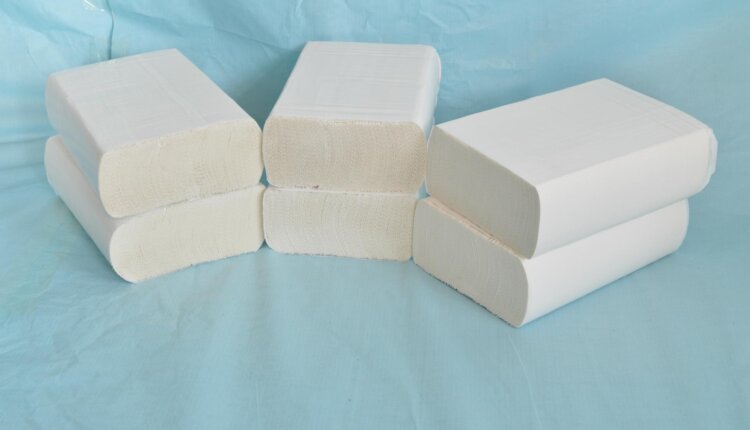Bulk Toilet paper could once again become a scarce commodity. This time, however, it is not hamster purchases like at the beginning of the corona crisis.
The German paper industry warns of production problems. “In the hygienic paper production process, we are particularly dependent on gas. If we lose it, we can no longer guarantee the security of supply,” says Martin Krengel, Vice President of the “The Paper Industry” association on the occasion of “International Toilet Paper Day” on Friday security of supply in Germany at risk .
Bulk Toilet paper is an important commodity, not only in private households. “It is also indispensable in the workplace and in public facilities such as hospitals, nursing homes and airports,” says Krengel.
According to calculations by the association, 750,000 tons of toilet paper are produced in Germany every year. About 125,000 tons are exported, but the same amount is also imported. Half of the Bulk Toilet paper rolls are now made from recycled paper.
The association had already announced in March that gas as an energy source could hardly be replaced. Switching to other energy sources is not easy for the industry. Only a maximum of 15 percent of the natural gas purchases in the German paper industry could be replaced in the short term.
Against the background of the energy transition, the trend towards switching to natural gas as a bridging technology has solidified in the paper industry. In the meantime, natural gas accounts for 55 percent of the total fuel use.
Should there be supply problems due to gas shortages, there are also alternatives to using Bulk Toilet paper rolls.,At the beginning of the year there were recently empty shelves in the hygiene departments of some supermarkets. But that was not due to hamster purchases.
The discounter Aldi Süd saw the reason for the empty shelves in the omicron wave. “The spread of the omicron variant can also have an impact on the processes in the Bulk Toilet paper supply chains. In the In terms of logistics, it can therefore take a little longer to get the goods from A to B,” the discounter said.

In the first few weeks of the corona wave, also for fear of longer-lasting lockdowns, toilet paper was one of the particularly popular products. However, since this is not implemented as quickly in supermarkets as food, the subsequent delivery took a little longer. But that was due to logistical challenges. There were no actual major supply bottlenecks at the time.
It was not very long ago, when it seemed almost impossible in German supermarkets and drugstores to get even a roll Bulk Toilet paper.
Many citizens were too unsettled by the corona pandemic and encouraged to hamster absurd quantities of the hygiene article as a kind of investment in their own four walls.
Anyone who was really dependent on two- or three-layer supplies during this time was inevitably redirected from the yawning emptiness of the Bulk Toilet paper shelves towards handkerchief, newspaper and Co.
How Much Bulk Toilet paper Does A Person Consume?

And that would be a problem, because every German citizen consumes on average between ten and 15 kilograms of Bulk Toilet paper per year. In his entire life, there are more than 3,600 rolls.
A total of 750,000 tons of toilet paper are produced in Germany per year. This corresponds to 3.4 percent of the total paper production. “Bulk Toilet paper is not only important for private hygiene,” says Krengel. It is also indispensable in the workplace and in public institutions such as hospitals, nursing homes and airports.
MUSSELS, LUMPS OR MOSSES
Before this time, you are called with leaves, rags or simply water. The Greeks used clay shards or mussels. After all, the Romans already resorted to tightly bound wet sponges.
Archaeologists found rags, fabric remnants and small wool bales in medieval toilets, as historian Sabine Schachtner from the Industrial Museum of the Rhineland Landscape Association found out.
They were washed and used again and again. Other sources describe the use of moss, leaves, hay or straw. The Chinese were in the 14th. century the first to produce toilet paper.
Raw materials are scarce and expensive
One of the main reasons: Pulp, the central raw material for the production of hygiene paper, has been scarce and expensive for months. Because with the restart of the global economy, the demand for paper has also risen sharply in general.
For example, the Federal Statistical Office noted in November that the import price of pulp had risen by 45.7 percent within a year and that for waste paper by 75 percent. The wholesale price of mixed waste paper has even tripled within a year.
In addition, the energy-intensive paper industry is suffering massively from exploding energy prices and generally higher costs in logistics. And to make matters worse, the employees in the paper and pulp plants of the Finnish supplier UPM also went on strike in January.
Many manufacturers already increased prices last year, but that is apparently not enough. This is shown, for example, by the figures of market leader Essity, which produces Zewa toilet paper and speed handkerchiefs, among other things: Although sales of the Swedish industry giant increased by eleven percent in the fourth quarter of 2021 compared to the previous year, profit fell by 34 percent.
Price increases in all product categories and markets are therefore indispensable, announced Essity boss Magnus Groth. Because: “We do not expect a decrease in the historically high costs of raw materials, energy and distribution in the near future.”

